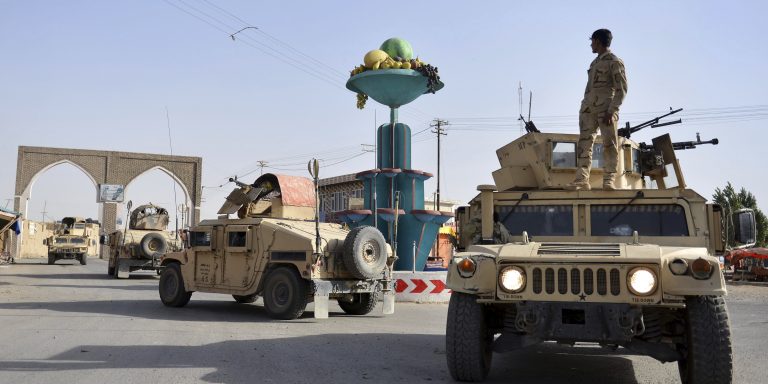INTELBRIEF
August 14, 2018
IntelBrief: At a Breaking Point in Afghanistan

- On August 13, the Afghan government sent 1,000 additional soldiers to assist in the ongoing battle in Ghazni.
- The Taliban launched a massive attack on the vital provincial capital on August 10.
- In 2 days, the government lost over 200 personnel, including many from the highly regarded Afghan commandos.
- Despite continuous upbeat assessments by U.S. and Afghan officials, the situation in Afghanistan is no longer a stalemate; the war is being lost.
.
The importance of Ghazni to Afghanistan is hard to overstate. It is the provincial capital: historically and symbolically significant, and logistically vital. It is therefore one of the more important cities for both the government to protect and the Taliban to threaten. On August 10, 2018, the Taliban did more than threaten Ghazni; by all accounts it launched a massive well-planned assault on the city, and by some accounts it actually took some parts of the city. What is not in dispute is that despite the upbeat statements from U.S. defense officials that the ongoing battle shows that ‘again, tactically, operationally, and strategically, the Taliban achieved nothing with this failed attack,’ with this attack, the Taliban showed both the limitations of even the best Afghan units, as well as the increasing reach and the strengthening grasp of Taliban forces.
The attack is the inevitable result of the situation in which the government ‘holds’ the cities while the Taliban ‘controls’ the countryside; this situation has always ended poorly for those in the cities. The attack on Ghazni was part of a larger offensive. In Faryab Province, the Taliban killed perhaps 50 of the 100 Afghan National Army (ANA) defenders in an outpost. In Baghlan Province, the Taliban killed 16 government security personnel (a mix of soldiers and police) along the crucial highway between Kunduz and Pul-e-Kumri. The inability to control the main supply routes between the major cities leaves each population center as an island, and the country itself as an archipelago of government control against the larger backdrop of insurgent influence and threat.
In Ghazni province, there is reporting that up to 100 ANA Commandos were killed in an overwhelming attack against a base in Ajristan district. The Taliban used the tactic perfected by the so-called Islamic State in Iraq, using massive vehicle borne improvised explosive devices (VBIEDs)—from which there is no protection other than distance—to destroy the base’s defenses. The Commandos have long been regarded as the best of Afghan military forces and such a loss, if accurate, would take a significant toll on the overall military capacity in that area.
U.S. officials have stated that their forces conducted 16 airstrikes against Taliban positions in and around Ghazni on August 12, killing an estimated 140 fighters. The New York Times reported on August 13 that the Taliban killed over ‘200 Afghan defenders on four fronts.’ The fact that in 2018 the Afghan government requires substantial direct U.S. combat support to avoid losing the provincial capital city of Ghazni is an undeniable indictment of the overall status of the war. The security situation has been tenuous in Faryab for a decade, and is consistently getting worse in Baghlan, to include the capital of Mazar-e-Sharif. These areas, particularly Baghlan, are not in what were once considered the Taliban strongholds of Helmand and Kandahar provinces, and show the country-wide reach of what Afghan and U.S. officials continue to dismiss as a failing and flailing opponent.
.
For tailored research and analysis, please contact: info@thesoufancenter.org
[video width="960" height="540" mp4="https://thesoufancenter.org/wp-content/uploads/2018/08/IB-0814.mp4" poster="https://thesoufancenter.org/wp-content/uploads/2018/08/AP_18225210528101.jpg"][/video]